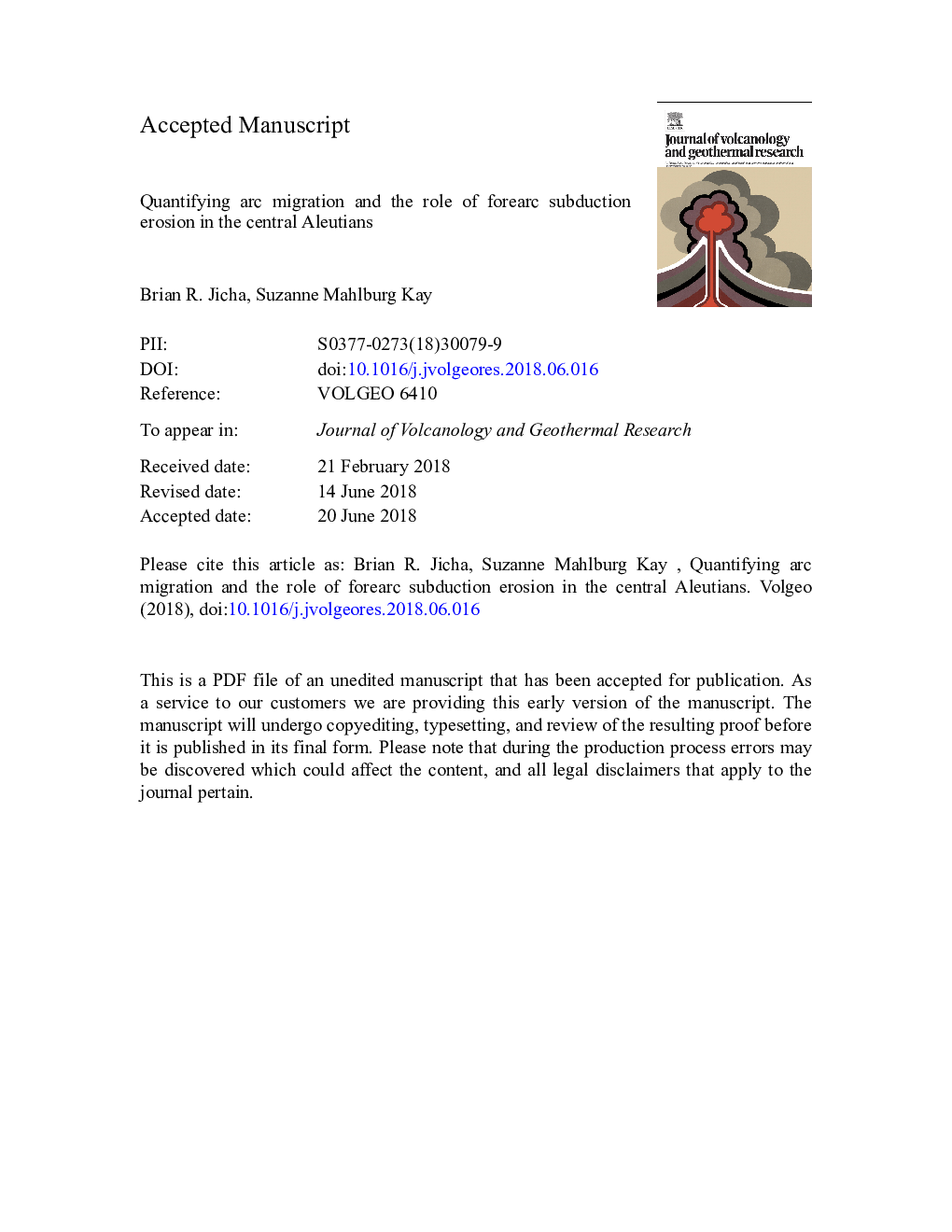| کد مقاله | کد نشریه | سال انتشار | مقاله انگلیسی | نسخه تمام متن |
|---|---|---|---|---|
| 8911234 | 1638263 | 2018 | 71 صفحه PDF | دانلود رایگان |
عنوان انگلیسی مقاله ISI
Quantifying arc migration and the role of forearc subduction erosion in the central Aleutians
ترجمه فارسی عنوان
اندازه گیری قوس مهاجرت و نقش فرسایش فروپاشی پیشرو در حلبچه مرکزی
دانلود مقاله + سفارش ترجمه
دانلود مقاله ISI انگلیسی
رایگان برای ایرانیان
موضوعات مرتبط
مهندسی و علوم پایه
علوم زمین و سیارات
ژئوشیمی و پترولوژی
چکیده انگلیسی
The active Aleutian arc is currently classified as an accreting margin as most of the arc has a well-developed frontal accretionary prism that formed in the Plio-Pleistocene. We focus on the central Aleutian island arc where the arc massif was built to near its current size by the Late Eocene and has since seen limited growth and endured episodic erosion prior to the development of the accretionary prism. As a result, the volcanic front has migrated northwards tens of kilometers since inception. Along with previous mapping, dating and geochemical data, sixteen new 40Ar/39Ar dates and new geochemical data for volcanic rocks on several central Aleutian Islands supplement recent geochronologic data from six other islands in this region and facilitate an attempt to understand how and where Aleutian arc volcanism has migrated with time. Long-term average arc migration rates range from 0.6 to 5â¯km/Ma in three distinct locations. The arc migration rate increases to the west and is greatest over the last five million years as the arc migrated from a 7-5â¯Ma volcanic front to its current location. Arc migration and erosion during this most recent period may have been expedited by either the subduction of the Kula Ridge, which ceased spreading in the early Eocene, or clockwise rotation of the Pacific plate in the late Miocene. Some central Aleutian lavas and plutonic rocks have elevated La/Yb, Sm/Yb, and Sr/Yb, most of which were emplaced during times of arc migration or in the waning stages of a peak in magmatic activity. The strongly fractionated trace element patterns are similar to the basaltic andesites to dacites from the western Aleutian seafloor, which are interpreted to be the result of residual garnet during partial melting of eclogite in the subducting oceanic crust. However, the existing subduction parameters coupled with the timing of the central Aleutian adakite-like lavas favors a model in which significant subduction erosion of the mafic forearc, including erosion and subsequent melting of the trapped Kula plate (i.e., MORB-like oceanic crust) as well as early Aleutian arc basalts in the mid-crust, may be partly responsible for the eclogitic component observed in central Aleutian magmas.
ناشر
Database: Elsevier - ScienceDirect (ساینس دایرکت)
Journal: Journal of Volcanology and Geothermal Research - Volume 360, 1 July 2018, Pages 84-99
Journal: Journal of Volcanology and Geothermal Research - Volume 360, 1 July 2018, Pages 84-99
نویسندگان
Brian R. Jicha, Suzanne Mahlburg Kay,
